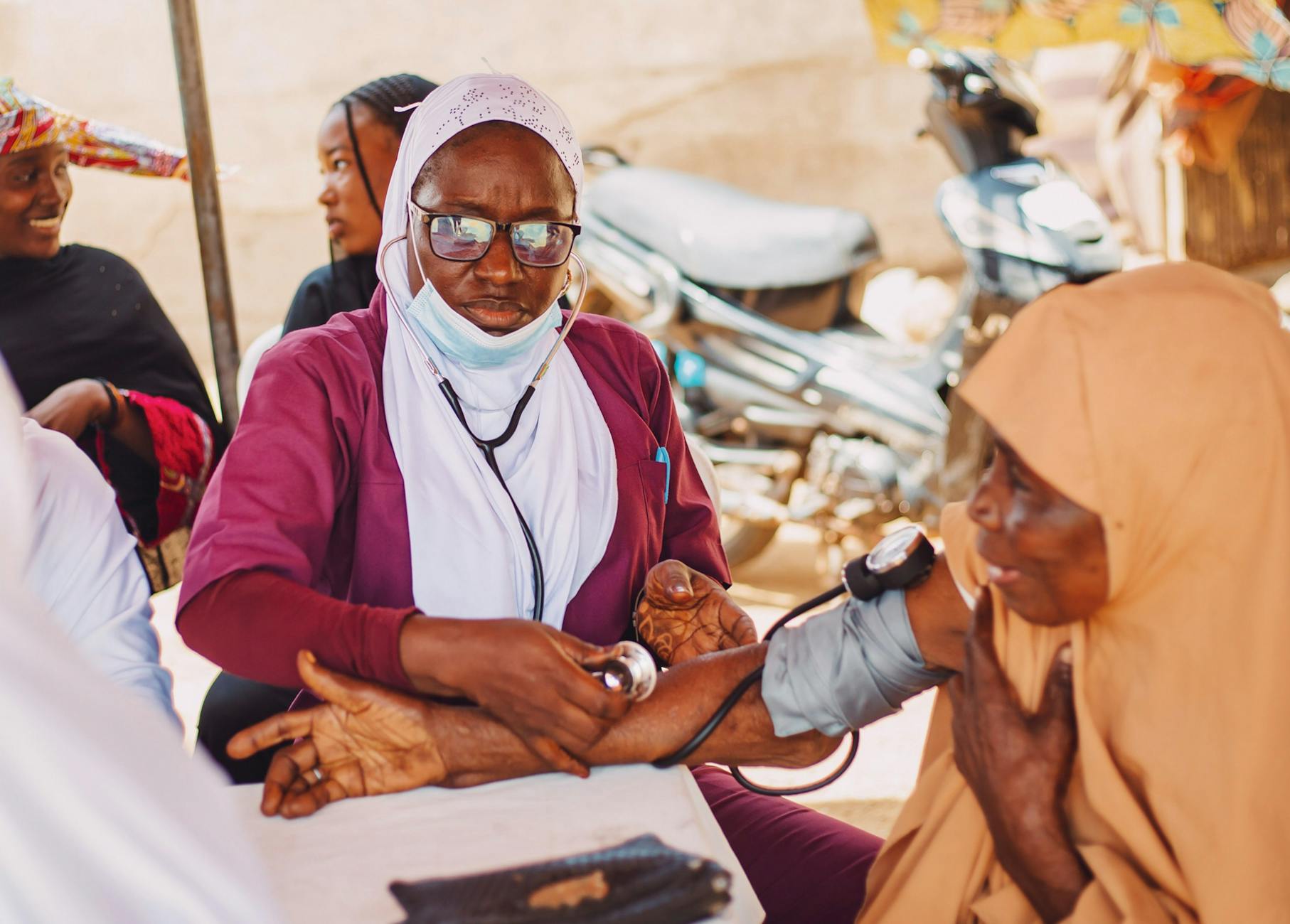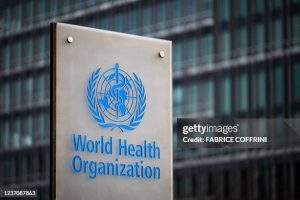Nigeria’s Healthcare Workforce Crisis: The Numbers Behind a System on the Brink
Nigeria’s healthcare system is standing at an inflexion point. On one hand, the country carries the ambition of achieving universal health coverage for over 200 million citizens.

Photo by MKP
Nigeria’s healthcare system is standing at an inflexion point. On one hand, the country carries the ambition of achieving universal health coverage for over 200 million citizens. On the other hand, a chronic shortage of skilled health professionals, compounded by large-scale emigration and underfunded infrastructure, is pushing the system to its limits.
While conversations about “medical brain drain” often dominate headlines, the depth of Nigeria’s workforce challenge goes beyond anecdotal reports.
Hard data paints a sobering picture: Nigeria has fewer than 40 practising doctors per 100,000 people, which is far below the World Health Organisation’s (WHO) threshold for adequate coverage.
Nearly 70% of current health expenditure comes from out-of-pocket health spending, creating a significant barrier to accessing quality care for millions of individuals (World Bank, 2024).
This is not just a crisis for hospitals—it is a national development issue. Health systems do not function without trained people. And in Nigeria, the pipeline is leaking faster than it can be replenished.
The Numbers Behind the Shortage
The World Health Organisation (WHO) recommends a target of healthcare professionals, including doctors, nurses, and midwives, of per 1,000 people to meet the Sustainable Development Goal (SDG) health targets. However, in Nigeria, the current figure stands at only approximately 1.95 professionals per 1,000 people, which falls significantly short—less than half—of the WHO’s recommended benchmark.
According to the Medical and Dental Council of Nigeria (MDCN), just 58,000 doctors renewed their licenses in 2023, even though over 130,000 are officially registered. This gap reflects one harsh truth: tens of thousands of doctors have either left clinical practice or exited the country entirely.
Nursing follows a similar pattern. The Nursing and Midwifery Council of Nigeria (NMCN) reports that 42,000 nurses left the country between 2020 and 2023, many to the UK, Canada, and Gulf states. Meanwhile, new graduates cannot fill the vacuum at the required pace.

Key Workforce Ratios (2024)
- Doctor-to-population ratio: 1:5,000 (WHO recommends 1:600)
- Nurse-to-population ratio: 1:1,160 (far below global median)
- WHO threshold for UHC: 4.45 professionals per 1,000 population
(Sources: WHO, Africa CDC, MDCN, NMCN)
Why the System Is Losing Its People
Migration is not random—it is driven by harsh economic and institutional realities. The UK’s NHS may have Nigeria on its “red list” for ethical recruitment (UK DHSC, 2024), but nurses still leave through independent applications. The reasons are clear: an average monthly salary for a Nigerian nurse is roughly ₦80,000 to ₦150,000 ($100–$190), compared to £2,000 to £2,500 in the UK.
Additionally, issues such as inflation and irregular wage payments exacerbate the dissatisfaction among healthcare professionals, prompting them to look for better opportunities elsewhere.
It is not just about the pay. Nigeria’s health system has been chronically underfunded for decades. In 2021, only 5% of the federal budget was allocated to health, far short of the 15% Abuja Declaration target set in 2001.
Working conditions add to the frustration. Many tertiary hospitals lack functional diagnostic equipment. Power outages disrupt surgeries. Security risks loom large in some states.
For ambitious professionals, the calculus is simple: why stay underpaid and under-equipped when opportunities abroad offer better pay, safer environments, and clear career progression?
Furthermore, the pull factor for health professionals seeking opportunities in other countries is significantly influenced by specific policy decisions made by destination countries.
For instance, the UK and Gulf states have implemented streamlined visa processes to attract health professionals in response to their own workforce shortages.
Additionally, Canada has developed a health human resources strategy that includes pathways to permanent residency for foreign-trained nurses and doctors, further incentivizing migration to meet healthcare demands.
What the Data Says About Primary Care
If tertiary hospitals are overwhelmed, primary health centres (PHCs) are faring no better. A 2023 national PHC survey covering 25,736 facilities reported an average compliance score of 40.7% for basic services, staffing, and equipment. Many centres function as shells—open in name but lacking personnel or electricity.
Even in facilities considered operational, functionality remains inconsistent. For example, a rural clinic in Kaduna may have a building and a signboard but no midwife on duty. Patients often travel kilometres to secondary hospitals, worsening delays and maternal mortality outcomes.
Policy Interventions (Progress and Pitfalls)
The government has been active in enhancing healthcare initiatives through the implementation of the second National Strategic Health Development Plan (NSHDP II) and the enactment of the National Health Insurance Authority Act (2022). These measures are designed to broaden health coverage and improve infrastructure across the country.
Furthermore, collaborations with the Nigeria Sovereign Investment Authority (NSIA) have resulted in the establishment of diagnostic centers and interventional cardiology units within teaching hospitals, aimed at advancing medical services and healthcare delivery.
Yet implementation gaps persist.
Many PHCs planned under the 10,000 PHC project remain incomplete five years after launch. Wage adjustments following industrial strikes—such as the 2023 doctors’ strike and the July 2025 nurses’ strike—barely keep pace with inflation.
The Hidden Costs
The ripple effects of these shortages are staggering. Nigeria accounts for nearly 20% of global maternal deaths, largely due to the absence of skilled birth attendants and referral delays (WHO MMEIG, 2023).
Out-of-pocket spending remains above 70% of total health expenditure (World Bank, 2024), making care unaffordable for many households.
Private hospitals, sensing opportunity, are expanding—but often at costs inaccessible to average citizens. This dual system—elite access vs. mass deprivation—entrenches health inequity.
If nothing changes, Nigeria’s health indicators will deteriorate further even as the population soars toward 400 million by 2050. This is a crisis of human capital. And in healthcare, human capital saves lives.
Evidence Table
| Indicator | Figure | Source | Year |
|---|---|---|---|
| WHO SDG threshold | 4.45 per 1,000 | WHO | 2023 |
| Nigeria workforce density | 1.95 per 1,000 | Africa CDC | 2025 |
| Licensed doctors (active) | 58,000 | MDCN | 2023 |
| Nurses emigrated (3 years) | 42,000 | NMCN | 2023 |
| OOP health expenditure share | 70% | World Bank | 2023 |
| Maternal mortality ratio | 1,047 per 100,000 | WHO | 2023 |
| Share of global maternal deaths | 28–29% | WHO / UN estimates | 2023 |
Article Sources
The Workplace Magazine requires writers to use primary sources to support their work. These include white papers, government data, original reporting, and interviews with industry experts. We also reference original research from other reputable publishers where appropriate. You can learn more about the standards we follow in producing accurate, unbiased content in our editorial policy.
- Africa CDC. (2025). Africa Health Workforce Status Report 2025. Addis Ababa: African Union.
- Channels TV. (2024). Over 42,000 Nigerian nurses emigrated in three years – FG.
- Medical and Dental Council of Nigeria. (2024). Annual Report on Registered Practitioners. Abuja: MDCN.
- National Association of Nigerian Nurses and Midwives (NANNM). (2025). Workforce Retention and Safety Survey Report. Lagos: NANNM.
- Pac, M., et al. (2023). Primary Health Care Systems Readiness Assessment in Nigeria. Abuja: Federal Ministry of Health.
- Punch. (2024). Only 58,000 doctors actively practising – MDCN.
- UK Department of Health and Social Care (DHSC). (2024). Code of Practice for International Recruitment. London: DHSC.
- World Bank. (2024). Nigeria Health Financing Profile. Washington, D.C.: World Bank.
- World Health Organisation (WHO). (2023). Trends in Maternal Mortality: 2000 to 2023. Geneva: WHO.



